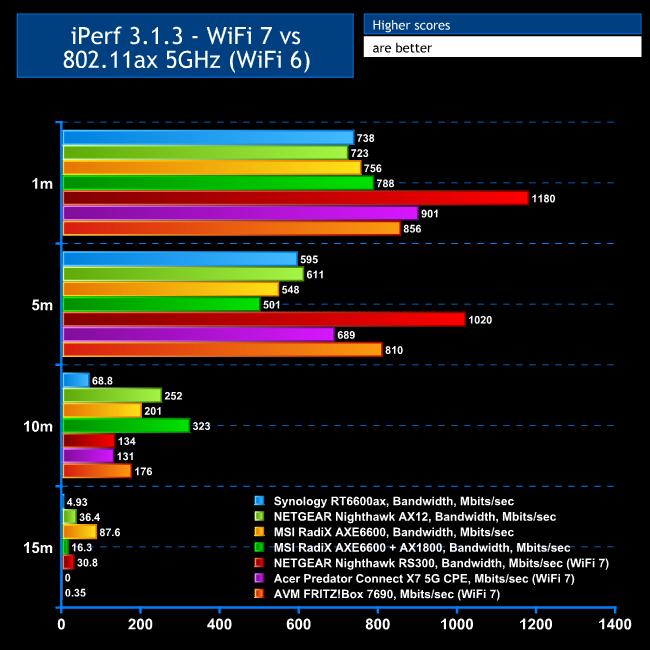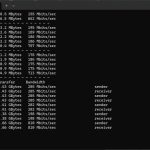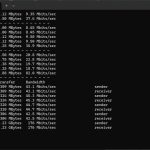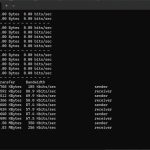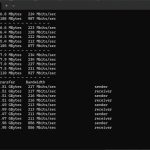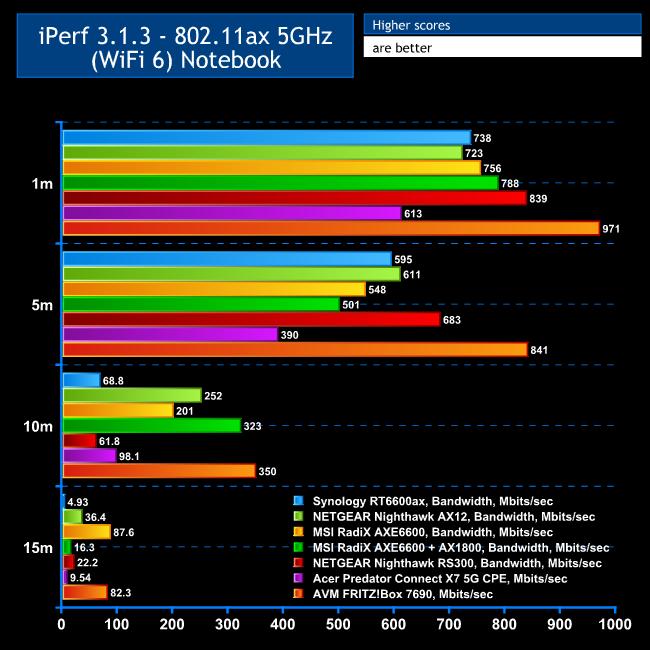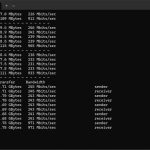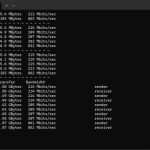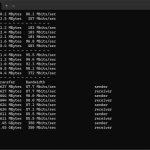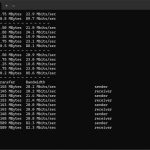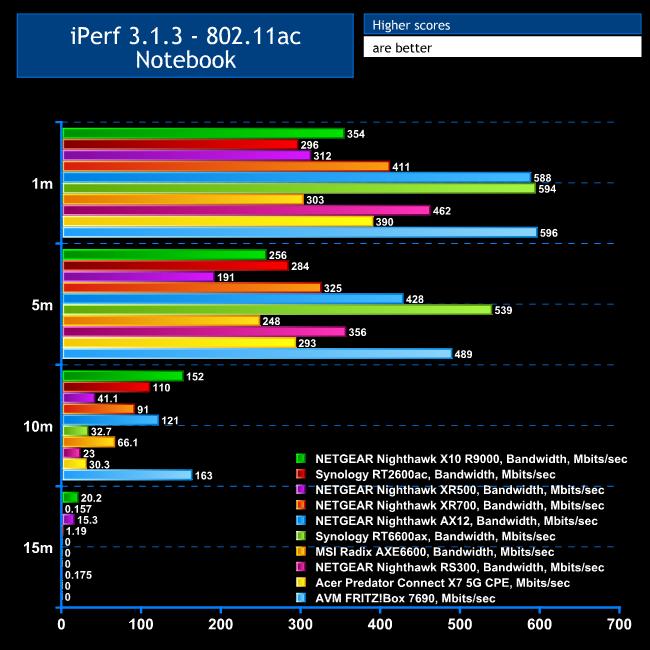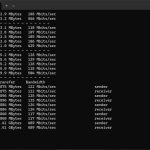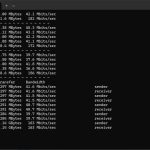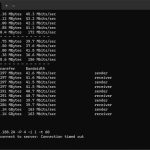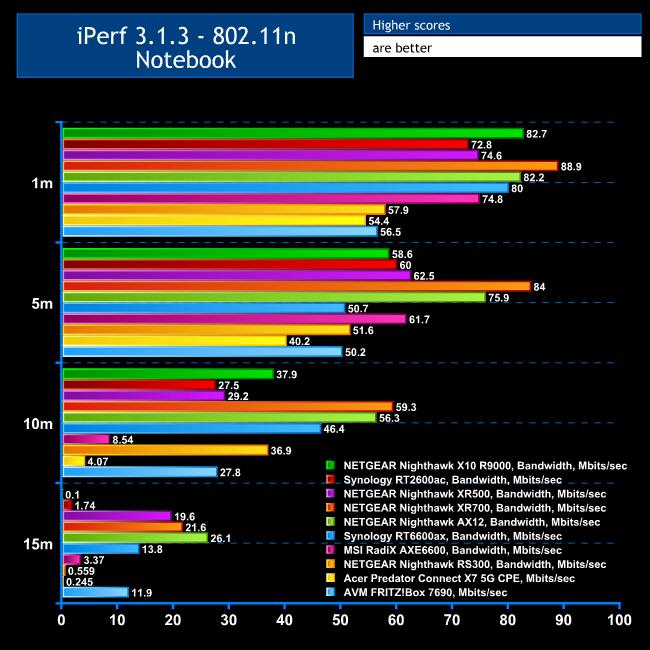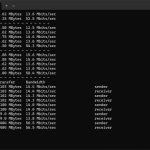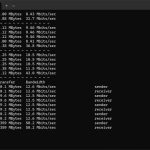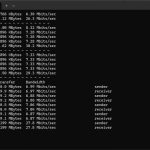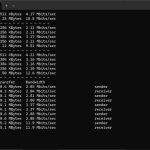We tested the raw throughput of the AVM FRITZ!Box 7690 across the four different WiFi standards it supports – 802.11be, 802.11ax, 802.11ac and 802.11n.
We used the open-source iPerf 3.1.3 software for testing, which can simulate multiple clients streaming at once. Five Windows systems were employed. Our desktop base was an Armari 32-core AMD Ryzen Threadripper workstation running Windows 11. For WiFi 7 testing, we used an Acer Swift 14 AI notebook, then a Dell XPS 17 notebook (for WiFi 6), a fourth was an MSI WS63-7RK (802.11ac) notebook, and finally an HP Folio 3 notebook (802.11n only – to show performance with legacy devices). The Acer and Dell notebooks and Armari workstation were running Windows 11 but the other two notebooks were Windows 10-powered.
Because 802.11be (WiFi 7) can theoretically greatly exceed the throughput of Gigabit Ethernet, we installed a 10Gbit Ethernet adapter into the Armari workstation. We then connected this using a Cat 6 cable to the 2.5Gbit-capable LAN port on the router.
For all tests, the notebooks were tested using their various WiFi connections (802.11be / WiFi 7 for the Acer, 802.11ax for the Dell, 802.11ac for the MSI, 802.11n for the HP). The notebooks were then placed in four different locations – within 1m of the router, approximately 5m away with a wall in between, 10m away and on a lower floor (with multiple walls and a floor in between), and then 15m away on the same lower floor. We tested all four distances with the four WiFi standards.
With each WiFi standard and distance, we took 60 readings of throughput at one second intervals and calculated the average (iPerf does this automatically). We tested the FRITZ!Box against the MSI Radix AXE6600, NETGEAR Nighthawk X10 R9000, Synology RT2600ac, NETGEAR Nighthawk XR500, NETGEAR Nighthawk XR700, Synology RT6600ax, NETGEAR Nighthawk AX12, NETGEAR Nighthawk RS300 and Acer Predator Connect X7 5G CPE.
802.11be (WiFi 7)
Without the aggregation of 6GHz wavebands (because this router only supports 5GHz), its maximum WiFi 7 performance isn't particularly outstanding.
While 856Mbits/sec at 1m close proximity clearly beats every WiFi 6 router we've tested, it's way behind the NETGEAR Nighthawk RS300 and a little behind the Acer Predator X7 5G CSE.
However, things improve at 5m. The FRITZ!Box's 810Mbits/sec isn't far behind its 1m performance, and it is now 18 per cent faster than the Acer Predator X7 5G CSE, although the NETGEAR Nighthawk RS300 is cruising way out in front.
At 10m, the FRITZ!Box shows the power of its radio signal with 176Mbits/sec, which is ahead of either of the other WiFi 7 routers we've tested so far, although some WiFi 6 alternatives do better at this range, notably the MSI RadiX AXE6600 and NETGEAR Nighthawk AX12.
Sadly, at 15m, the signal drops considerably and while the FRITZ!Box doesn't completely lose touch like the Acer, the throughput isn't usable.
Overall, this is a competent WiFi 7 router up to 10m, but not blistering. You're only seeing some benefit from the new WiFi standard close up.
802.11ax 5GHz (WiFi 6)
Considering how few and far between WiFi 7 clients still are, most of your devices will be using WiFi 6, so good performance here is essential.
The FRITZ!Box 7690 excels in this area.
At 1m, the throughput is an incredible 971Mbits/sec – faster than it was with WiFi 7 and faster than any WiFi 6 router we've tested before.
The performance is equally incredible at 5m, hitting 841Mbits/sec and way ahead of all competitors.
The 10m result keeps up the good work, with 350Mbits/sec still in front of everything else, although not by so much.
Only at 15m does the MSI RadiX AXE6600 go past the FRITZ!Box, but the 7690 is still managing a very usable 82.3Mbits/sec.
Overall, this is a brilliant router for WiFi 6 devices, where it currently really matters.
802.11ac 5GHz (WiFi 5)
The FRITZ!Box is pretty good with WiFi 5 devices too.
At 1m, the throughput of 596Mbits/sec is just about the fastest we've tested, by 2Mbits/sec, pipping the Synology RT6600ax.
The Synology gets past at at 5m, but the 7690 is still managing an excellent 489Mbits/sec bandwidth.
At 10m, the FRITZ!Box is still going strong with 163Mbits/sec, again leading the field, although at 15m it failed to achieve a signal.
Nevertheless, this is another strong showing, with very credible performance up to and including 10m – more than enough for a reasonably sized apartment.
802.11n 2.4GHz – Legacy
Although 802.11n clients are getting few and far between – the one we use for testing is over ten years old now – you might still have something that operates with this standard.
Even at 1m, the FRITZ!Box's throughput of 56.5Mbits/sec is rather slow.
However, 50.2Mbits/sec at 5m is a bit more competitive, as is 27.8Mbits/sec at 10m.
The performance of 11.9Mbits/sec at 15m is still quite usable. Quite a few competitors are faster, but many can't even deliver a signal to this range.
Overall, this is a very commendable set of results. While the headline WiFi 7 performance is merely good, this is an excellent WiFi 6 and 5 router. Its WiFi 4 performance isn't great but the range is still decent, too.
 KitGuru KitGuru.net – Tech News | Hardware News | Hardware Reviews | IOS | Mobile | Gaming | Graphics Cards
KitGuru KitGuru.net – Tech News | Hardware News | Hardware Reviews | IOS | Mobile | Gaming | Graphics Cards


